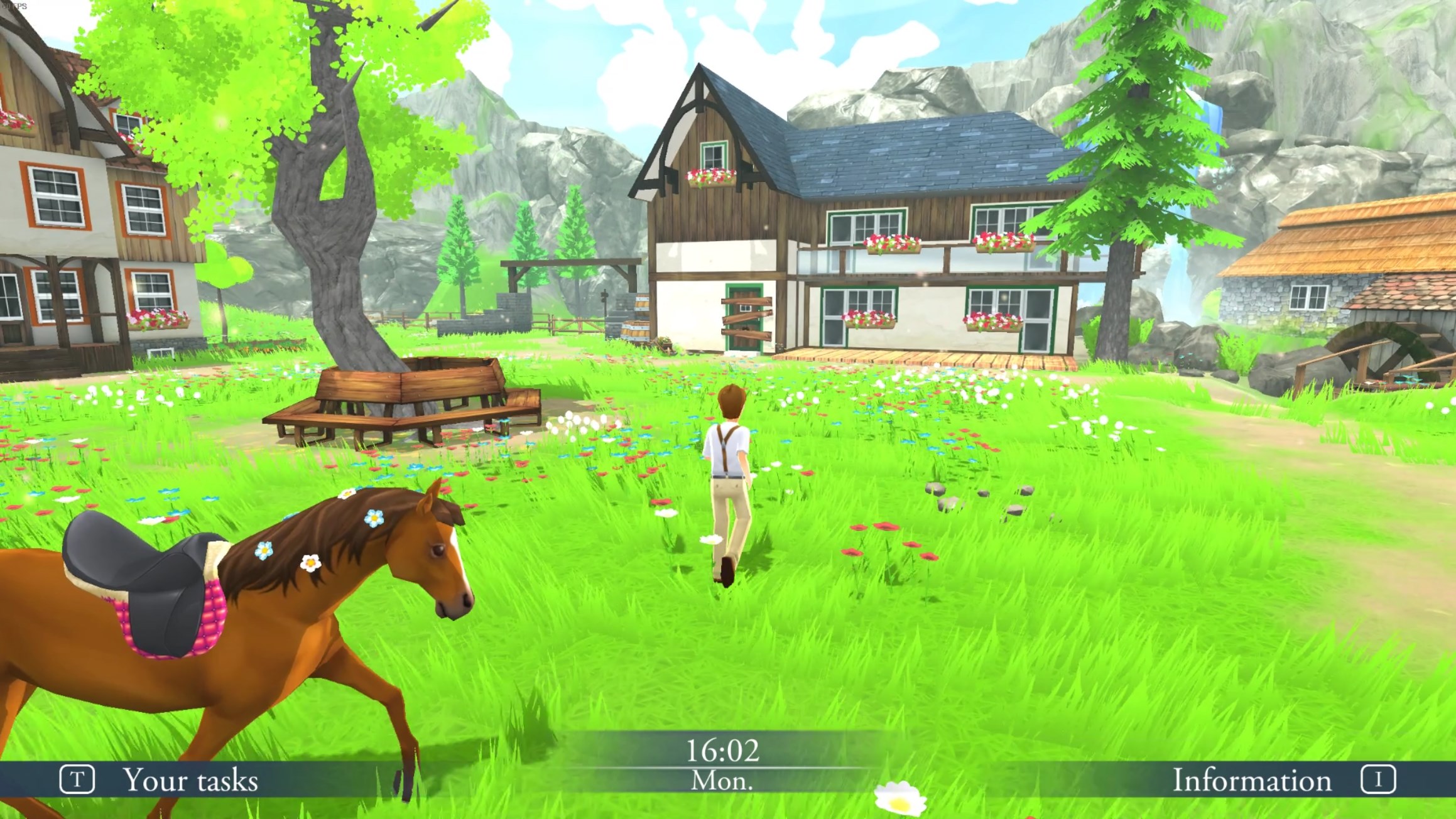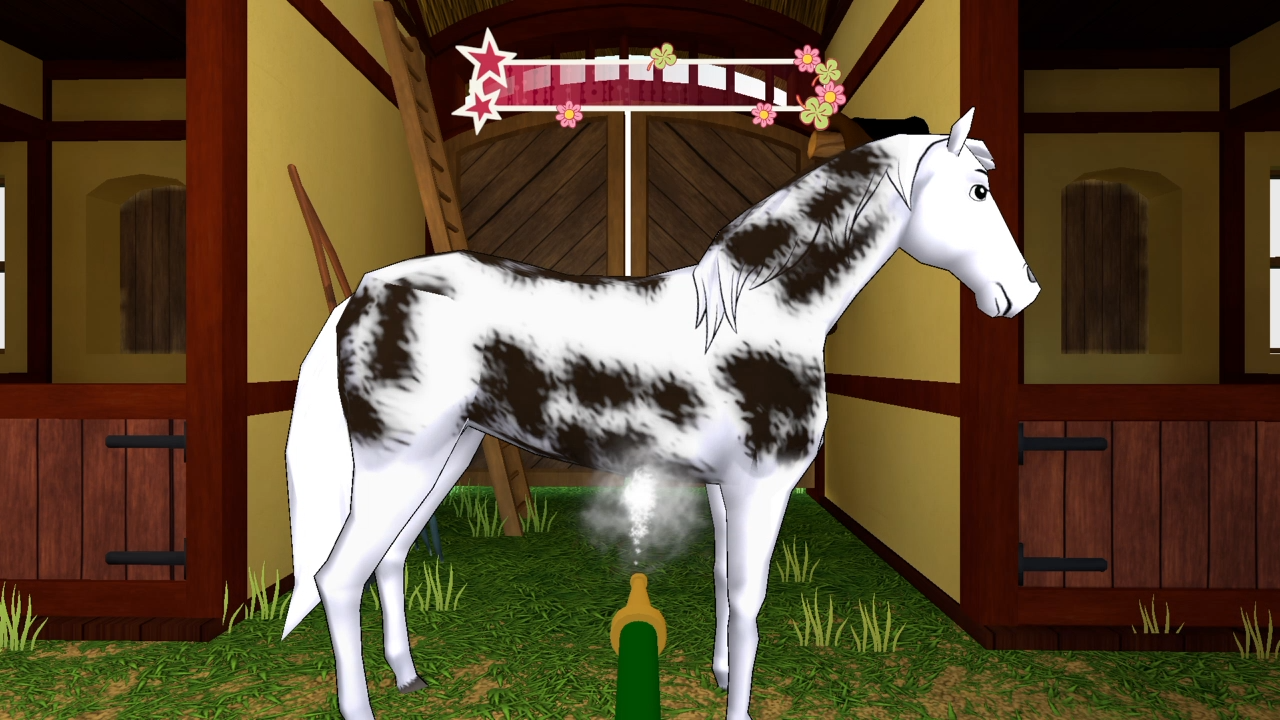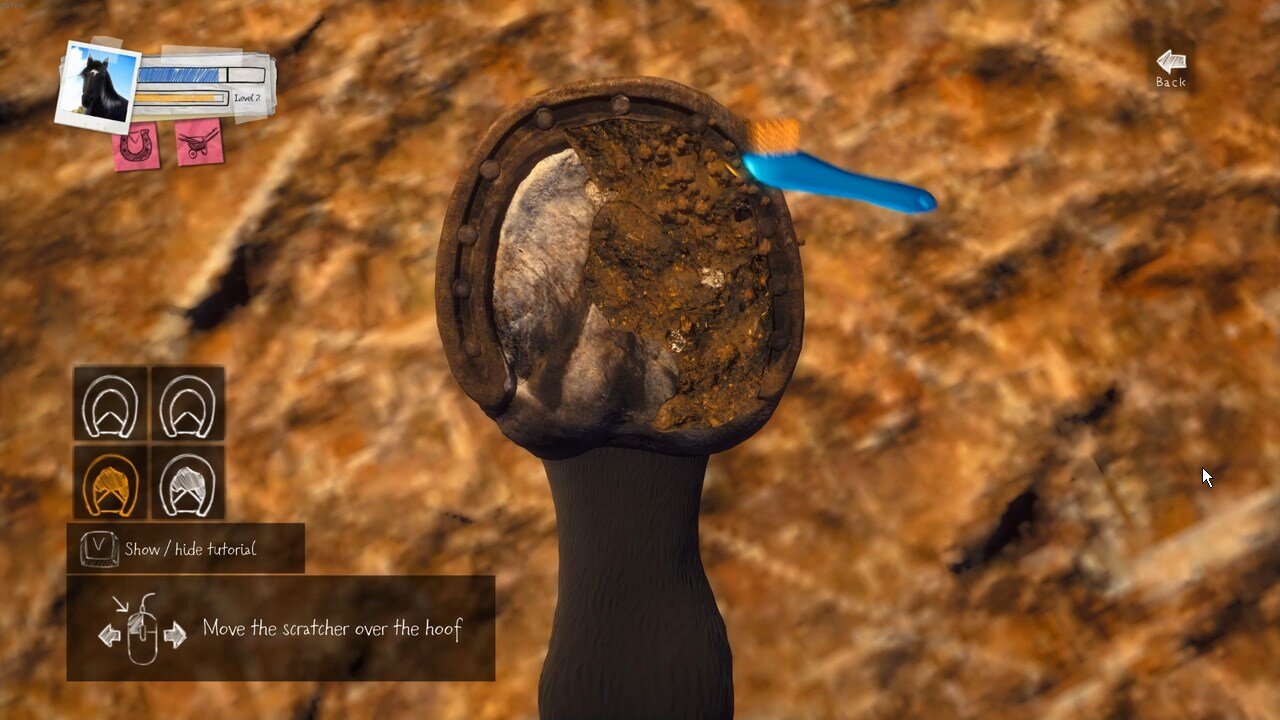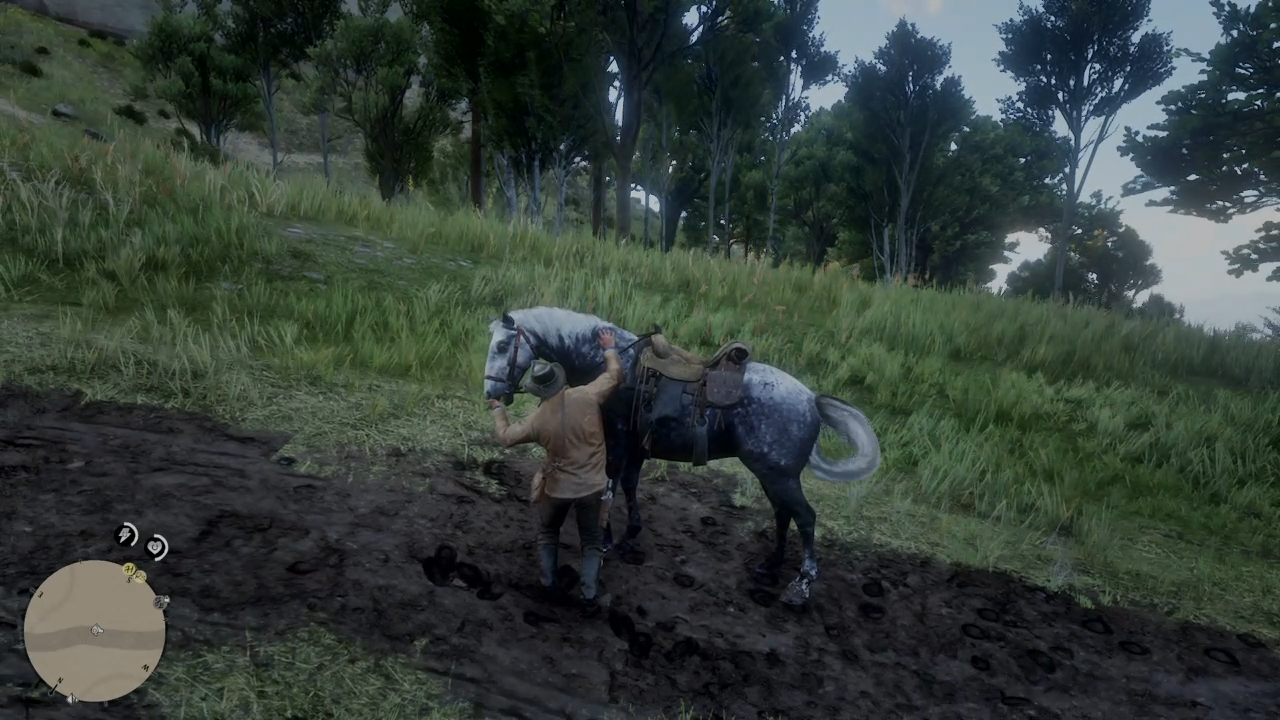Horse Care Mechanics: Why They’re Often Horrible and How To Get Them Right
If you’ve ever played a horse game — meaning a game which does not just feature horses as a means of transport, but actually puts its focus on horse ownership and riding — you’ll likely have seen an image very much like the above: A hoof-picking minigame where you click or drag your cursor around on a dirty horse hoof until some hoof cleanliness bar is full.
Most horse-focused games feature brushing your horse and picking its hooves. Others include feeding, combing mane or tail, or petting the horse regularly to fill some sort of trust or love meter.
Unfortunately, many of these horse care minigames quickly grow tedious or even frustrating: let’s take a look at why that is, what developers could do differently, and whether or not horse care mechanics are even necessary to begin with.
Many of the horse care mechanics I’ve tried grow boring almost immediately — or at the latest grow boring once you’ve completed them two or three times. In games like Ostwind/Windstorm and My Riding Stables: Life With Horses (especially the 2018 version), realizing it was time to groom my horse again was usually an occasion to groan in annoyance.
I see three main culprits for this annoyance and the general lack of fun I find in horse care mechanics: Duration, frequency and lack of satisfaction. Let’s look at each of these in turn.
Duration, Timing and Tedium
I’m not inserting the whole gif again, but one hoof takes 20 seconds and you have to do all four. My Riding Stables (2018)
This one is simple: horse care usually takes too long for it to be fun. For the developer of a horse game, the factors in deciding how long a care minigame takes should not be “how long does this take in real life”, but “how short does this have to be for players to enjoy doing it every time”.
Hoof care takes a total of 5s in Star Stable Online.
While the arguments of Frequency, Reward and Satisfaction are more important in order to make horse care games worthwhile, Star Stable Online proves that brevity can be an asset in itself:
Star Stable’s horse care consists of dragging an item from your inventory onto your horse. You see a brief animation and that’s it. It is neither particularly satisfying nor interesting, but it works because the daily horse care takes a grand total of about 20 seconds, and the game offers hours and hours of content beyond that. On the other extreme, you have a game like My Riding Stables, which makes you spend over a minute on hooves alone, and expects you to do that on every one of your up to six horses, on every in-game day, without offering a whole lot more to do than that.
If horse care gameplay is kept brief, you have a better chance of leaving the player wanting more, and less risk of overstaying your welcome.
Of course, people’s standards of how long is too long differ: A child who does not yet value their own time very highly might not complain as quickly about having to do the same thing several times. An adult on the other hand - especially one who has played better games and is able to see where the problems lie - may have less patience.
Horse games often get away with featuring tedious, repetitive and boring chores under the guise of being “for kids”, but forget that it’s entirely possible to make mechanics that are easy enough for kids to grasp while still offering basic user interaction feedback.
Frequency and Incentive
It makes sense for horse games to give the player a direct incentive to care well for their horses: in Star Stable, daily caring improves your horse’s mood and thereby its speed and reaction time. In My Riding Stables, your horses have a chance to get sick if you skip the care. In Red Dead Redemption 2, failing to brush your horse will eventually lead to it moving more slowly, although the game is more lenient about how often you have to do such chores than most horse games are.
The Bibi & Tina game I recently played makes horse care entirely optional: completing a horse care minigame rewards you with a speed boost. I initially liked this approach, but now that I’m further reflecting on it, I wonder if what I liked was just the fact that I didn’t have to do it more often, because the horse care games in Bibi & Tina fail utterly in the “satisfying” department.
On the opposite end of the spectrum, you have a game like Ostwind, which straight up blocks the player from continuing unless they first do their horse care chores. This might work if the chores were fun to do, but can also take away any sense of urgency the missions attempt to create in their narrative.
Lack of Satisfaction
Any chores in games succeed or fail based on how fun they are to play: If a developer can make their horse care mechanic satisfying in itself, players will be a lot more forgiving when it comes to how often it has to be done or how long it takes.
Something decidedly not satisfying is moving your mouse or joystick over a surface while a dirt texture slowly loses opacity. It’s cheap, and it feels like busywork, because it obviously does not matter what exactly you do as long as you spend x seconds moving the cursor around a specific area.
As a general rule, game mechanics are made satisfying by giving the user direct positive feedback for their interactions. If the player is doing the “right” thing, they should be immediately rewarded. In a hoof picking minigame where the right thing to do is to click a piece of dirt or a rock stuck in the hoof, that immediate reward should be a clearly visible effect such as that rock dropping away with a satisfactory sound effect.
Ostwind almost got that part right with its dirt chunks, but then dropped the ball (hoofpick?) by requiring the player to hold and wiggle the cursor over each chunk for several seconds for it to drop.
Another huge aspect where satisfaction is concerned is that when you spend time cleaning a horse in real life, it actually looks pretty afterwards. In all the horse games I’ve played, none dared make their dirt texture visible on the horse in any part of gameplay outside the horse care minigame itself.
If horses get dirty and look dirty during gameplay, brushing their coat and disentangling their tails can feel like you’re doing something worthwhile.
In doing so, you can also leave it to the player to gauge it they are happy riding their mud caked horse for a few days or if they do a full-body wash after every ride. You can reward players who groom their horses regularly with the grooming taking up less time, instead of just setting the dirt texture opacity to 100% whenever the player enters the coat brushing minigame.
Basic as these ideas may sound, I cannot recall ever seeing them implemented in a horse game. In my Bibi & Tina review, I pointed out the bizarre choices of quest structures these games often have. The refusal to combine horse care with the rest of the game in terms of something as simple as dirt visibility reminds me of the same basic problem: Horse games are often a patchwork of individual features and mechanics rather than a polished whole.
Necessity and Realism
Taking off the saddle to brush the horse would be a good idea maybe, Arthur.
You may be wondering whether all this effort and consideration is worth it to begin with. After all, many things that horse games have been doing are being done out of a lack of innovation rather than any proper reflection of what is best for the game.
Are horse care minigames an unavoidable staple of the genre, or are they an overused relic of the past? In a poll among TMQ Twitter followers, a clear majority of players seems to want horse care mechanics - assuming they are well implemented.
Personally, I find that horses that don’t need any care at all - such as the ones in Stardew Valley or My Time at Portia - seem a lot less lively than those with needs of their own. And in a game like Red Dead Redemption, taking the time to brush your horse can feel like a much-needed moment of peace and quiet.
For real life horse owners and those interested in becoming them, horse care is a huge part of stable life: Feeding, mucking out, brushing, hoof picking and more can easily take up twice the time than actually riding a horse.
In a game with an interest in realism, leaving horse care away can make the animals appear lifeless and machine-like. And even in Fantasy games that feature mounts, having to care for them can be an important element of grounding story and setting in reality.
Games as a medium excel at making supposedly mundane things into fun occupations. Many games in all genres include tasks that might often be tedious or exhausting in real life but fun and satisfying inside the game. From washing plates in Overcooked to weeding out your garden in Stardew Valley, ‘how to adapt chores into fun mechanics’ is a problem that game makers have solved dozens of times already - but horse games don’t seem to have gotten the message.
Concrete ideas for Improvement
How exactly a game should tackle horse care depends of course on the game’s scope and gameplay focus. This is a non-exhaustive list of what could make horse care mechanics more enjoyable:
Audiovisual Payoff: Simply reducing a texture’s opacity or playing a constant dirt particles is not enough. Let dirt chunks fall when clicked, make dirt patches disappear with a satisfying sound effect.
Brevity: Keep your horse care crisp and short. You want the chore to take significantly less time than grooming an actual horse would.
Visible Reward: Motivate players to clean their horses by actually having horses be dirty if they don’t.
Time and Place: Forcing the player to do chores at a fixed time is usually a bad idea. Reward them for doing it instead.
Progress: Give players the option to make horse care easier over time, for example by spending ingame resources on better grooming tools. Imagine if you felling your thousandth tree in minecraft took as long as your first one because you could still only use your hands for it instead of the efficiency enchanted diamond axe that you worked really hard to craft.
Education Opportunity: Employ real life “principles” of horse care in order to create mechanics and educate your players: have them make circling motions with a curry comb but follow the direction of hair growth with a brush, for example.
Even if horses are not the focus of a game, adding rewarding horse care mechanics can give the player’s relationship with their steed additional depth. Much like real life horse grooming is an opportunity for bonding, players are likely to be much more attached to their mount if they have invested voluntary efforts in keeping it clean, healthy and pretty.
As far as I can tell, many horse game fans want good caring mechanics in their games and are often disappointed. The good news is that getting such horse care mechanics right is not terribly difficult when basic principles of good user experience design are applied.



























Windstorm: Ari’s Arrival, created by Aesir Interactive, was released along with the movie of the same name in March 2019. I’ve been meaning to review it basically ever since. I have to admit that we’ve all been sleeping on this one, because it really gets a whole bunch of things right, and deserves vastly more attention from horse-loving players than it has been getting.